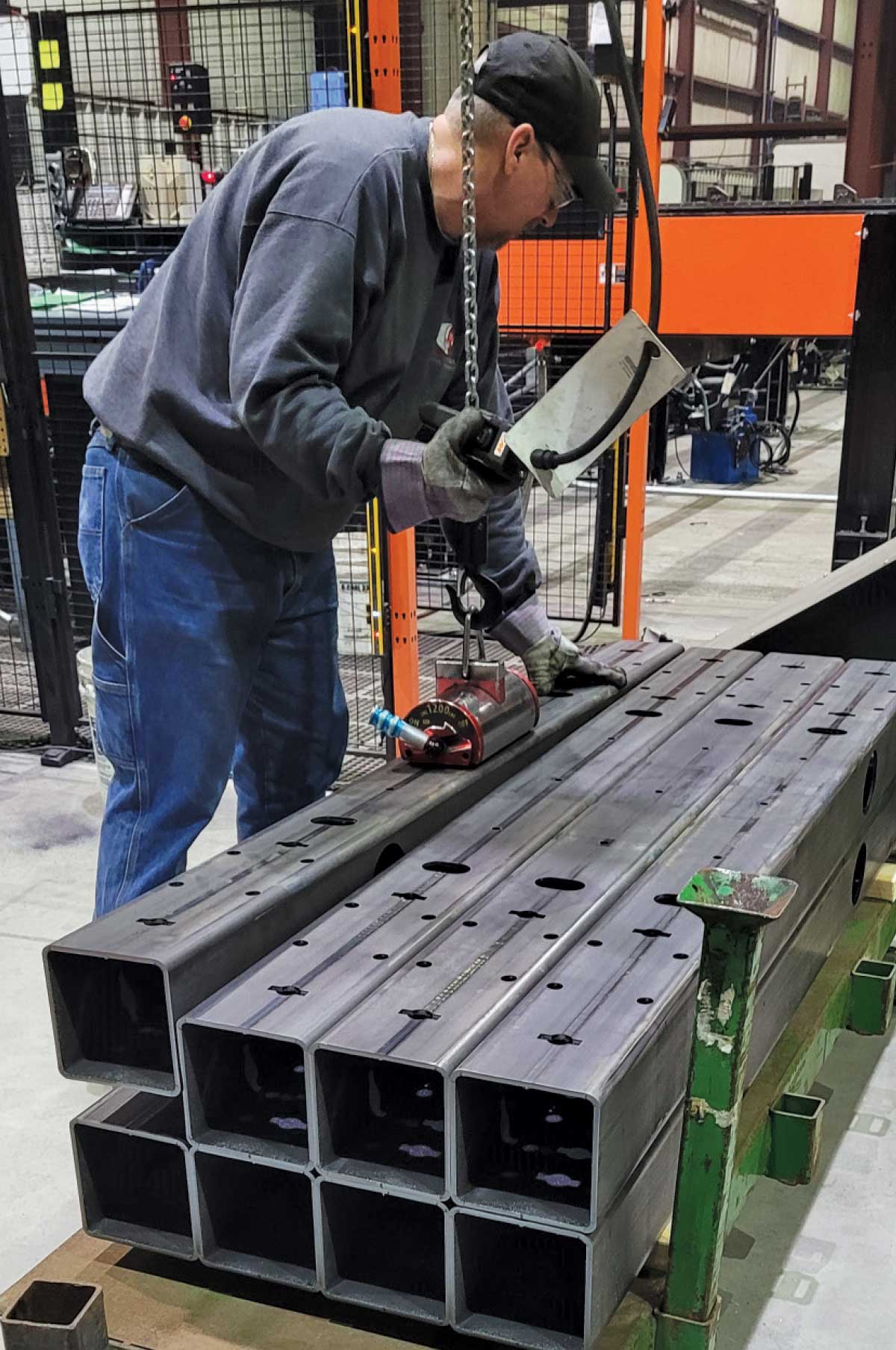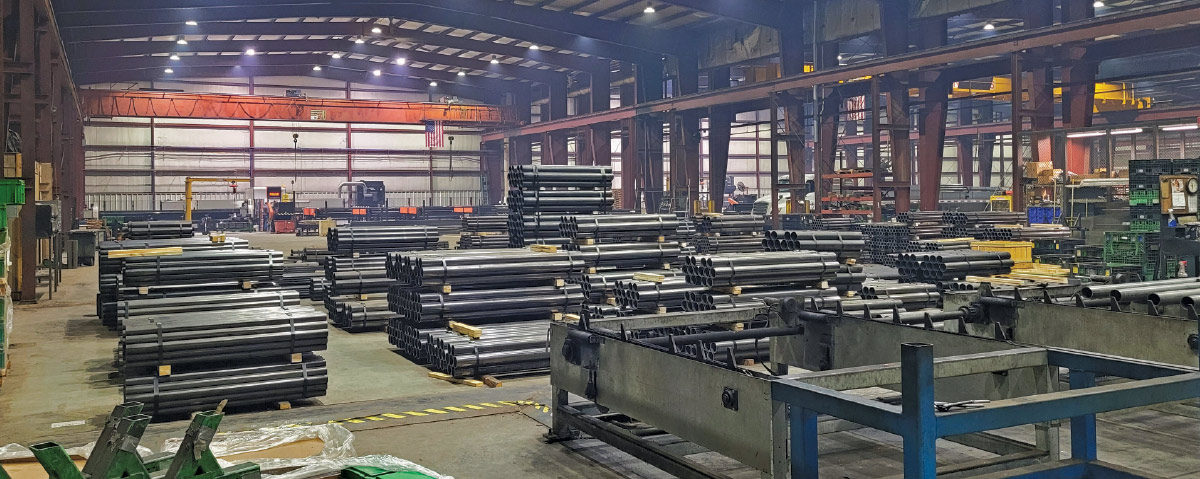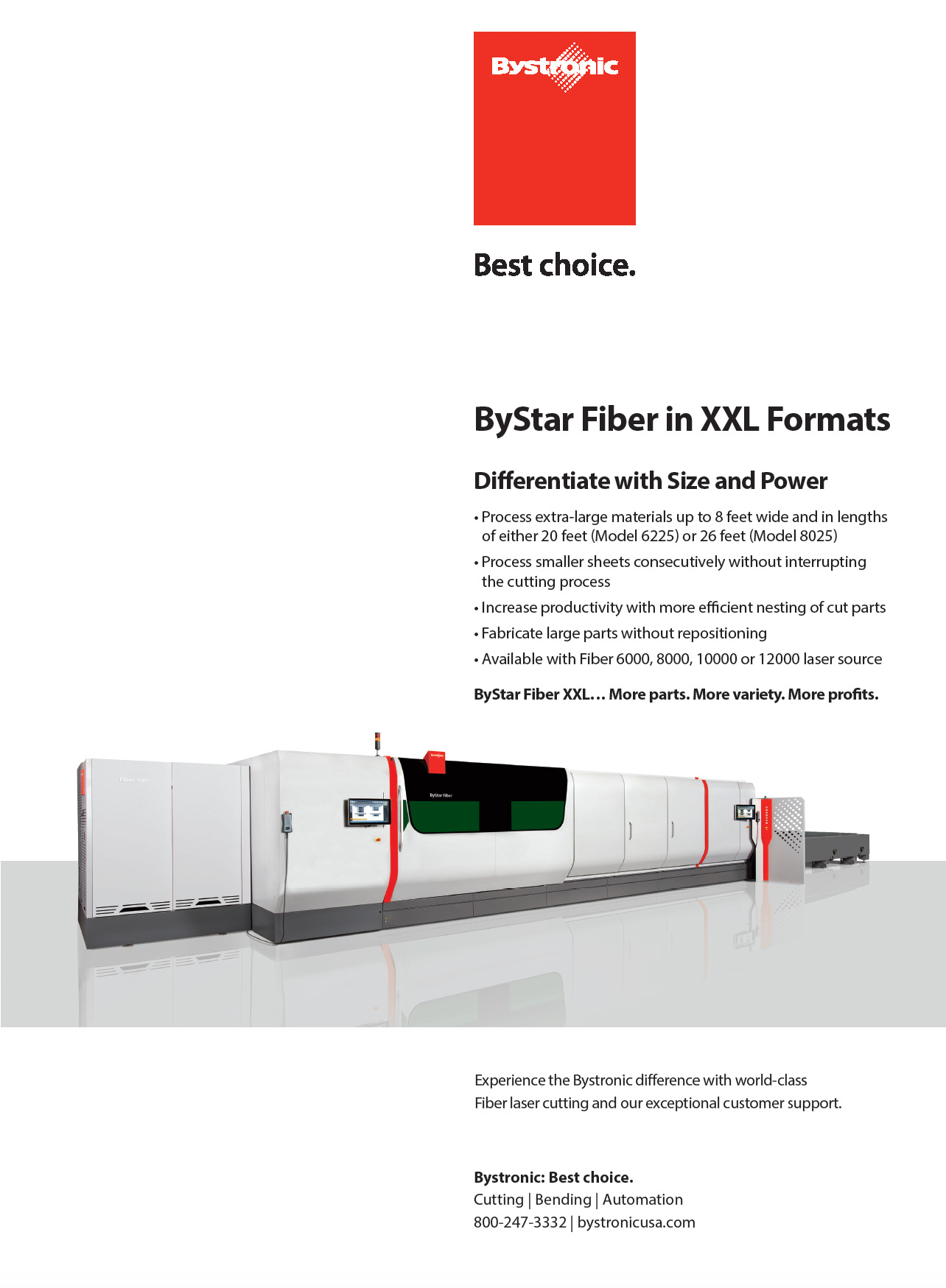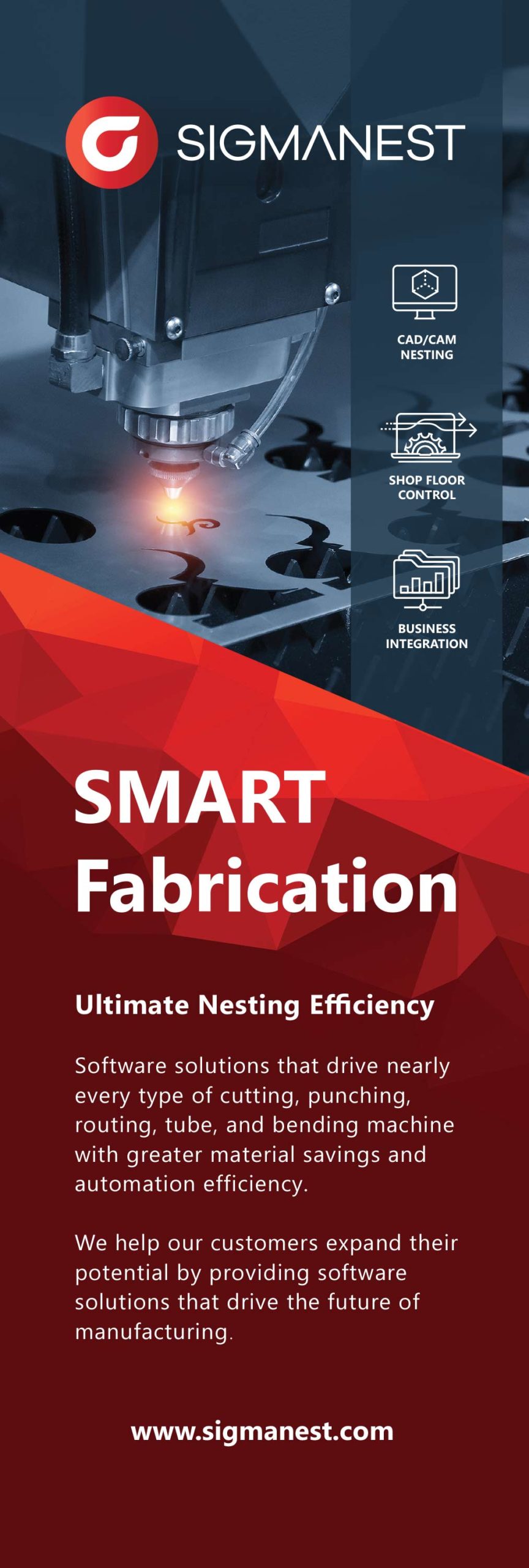n 1920, Herbert B. Van Pelt and Donald C. Van Pelt, a father-son team, started the Service Steel Co., distributing steel tube, pipe and bar and serving the Detroit automotive industry exclusively. One hundred years later, Service Steel, now with corporate offices in Sterling Heights, Michigan, has a broad base of customers and five branches across the United States.
The branch in East Moline, Illinois, serves industrial customers, including a solid base of agricultural equipment manufacturers, spanning Illinois, Iowa, Missouri, Wisconsin, Minnesota, North and South Dakota, and Kansas.
“The majority of our work is supplying tube, along with some bar, channel and angle,” says Jeffery Smith, district manager. “Roughly 90 percent of the product that is sold has some process done to it before it is sent out.”
Mazak’s 3D Fabri Gear 400 has a powerful, high-precision, 6-axis laser, and it is built with a rigid workpiece handling system incorporating a four-chuck design capable of processing large, long, thick, heavy materials. The 3D Fabri Gear 400 can laser cut an expansive range of mill-length tubes and pipes, including round, square, rectangular and triangular, I- and H-beams, C channel and angle iron. It can perform drilling and tapping.
Service Steel got up to speed quickly on the 6-axis tube laser. “Once the first Fabri Gear was filled up, it was decided that we needed a second large-format tube laser,” Smith says. “When customers discover you have the capability to do X, business grows organically. Plus, you get more business from current customers since you have the capacity and they are familiar with your performance on their current parts.”
While existing customer business was increasing, Service Steel also developed new business due to the capabilities of the 6-axis laser, and its engineers’ growing expertise with the design tools.
 When customers discover you have the capability, business grows organically.
When customers discover you have the capability, business grows organically. 
The company began vetting the possibility of a second tube laser and, during the process, realized that there would be several benefits from having two lasers of the same type, including the ability to use one program, the same consumables and a flatter operator learning curve. “The consistency made sense for us,” Smith comments.
Because Service Steel already had a Fabri Gear in house, the company was able to start training additional personnel before the new laser arrived. “We were able to get the new operators started with the basics,” says Smith. In November 2020, the second laser was ready for production. “Once the machine was installed, we had operator training with Mazak, which took our new operators across the finish line, and we were ready to go.”

The benefit of having two highly capable lasers starts with maintenance. “With the second machine, we are able to schedule preventive maintenance and not have production come to a stop. We still have one laser processing parts while the other one is having maintenance completed.”
The doubled capacity also has allowed Service Steel to take on additional business, bring outsourced work back in house, and better cope with seasonal surges.
“With us serving the agriculture industry, October through April is very busy,” says Smith. “During the winter, agriculture equipment dealers need spring planting equipment on the floor, and then by summertime, dealers need the harvesting equipment available.”


Service Steel Co., Sterling Heights, Michigan, 563/526-3973, servicesteel.com.


